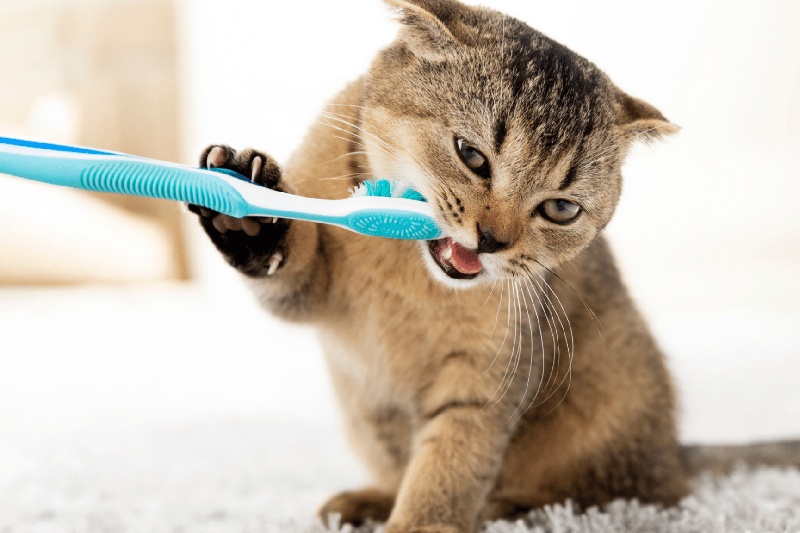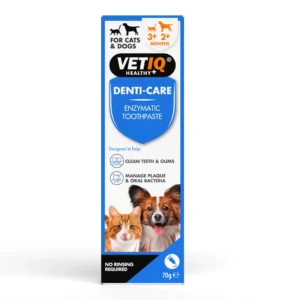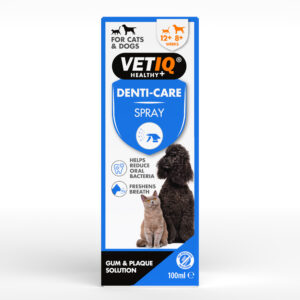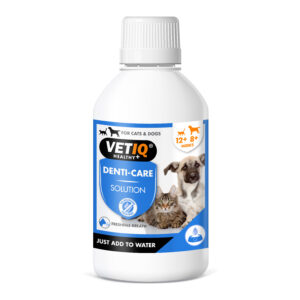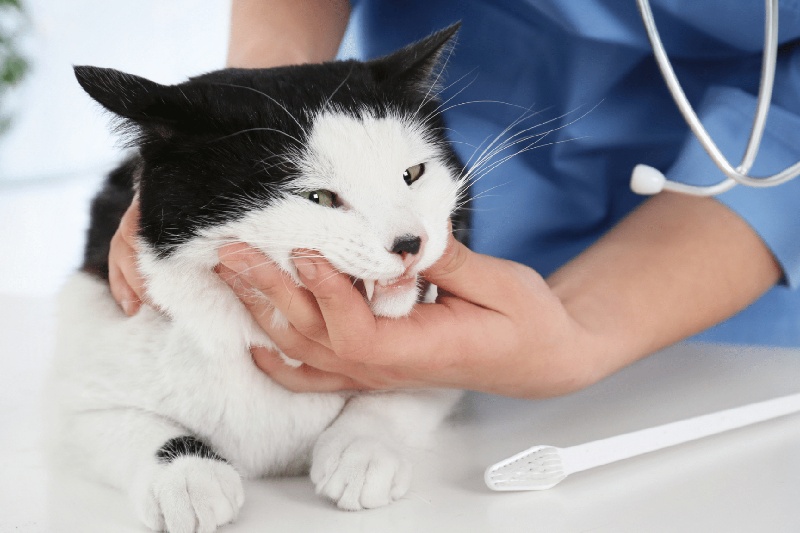They may have a reputation for being fiercely independent, but cats rely heavily on their owners to ensure their needs are met on a daily basis.
While ensuring a plentiful supply of food and cuddles is up there, a big responsibility that falls on the shoulders of pet parents is the regular maintenance of their cat’s oral hygiene. Although not the most appealing task given that the reaction to your efforts is unlikely to be positive, it is hugely important – particularly considering that eight in ten cats over the age of three suffer from dental disease in some form.
So, how do you go about taming your free-spirited feline friend for long enough to get their teeth looking their sparkly best? Let’s take a look at why and how you should brush your cat’s teeth at home as often as possible.
Why should you brush your cat’s teeth?
As seen in the startling statistic above, cats over a certain age are prone to an array of dental issues. Two of the most common types of feline dental disease are gingivitis and periodontitis, which can be caused by a build-up of plaque that leads to inflammation and infection.
Here are the main signs that your cat may be suffering from dental disease:
- Red, inflamed and/or bleeding gums
- Bumps such as ulcers or lesions on the gums or at the back of the mouth
- Bad breath
- Blood in the saliva
- Excessive drooling
- Loss of appetite, or only eating mushy foods
- Behavioural changes, such as decreased time spent grooming and not interacting with owners
If you notice that your cat is suffering from any of these signs or symptoms, get them checked over by a vet as soon as possible.
To prevent such issues – which if left untreated, can lead to more serious medical problems – it’s vital to carry out regular brushing and maintain a consistent dental hygiene regime.
-
VETIQ Denti-Care Kit 70g
£9.00 Subscribe & Save up to 20%! -
VETIQ Denti-Care Enzymatic Toothpaste 70g
£7.80 Subscribe & Save up to 20%! -
Healthy Bites Denti-Care 65G, Multipack
£9.20 Subscribe & Save up to 20%! -
VETIQ Denti-Care Spray 100ML
£7.40 Subscribe & Save up to 20%! -
VETIQ Denti-Care Powder 60G
£7.00 Subscribe & Save up to 20%! -
VETIQ Denti-Care Solution 250ML
£6.50 Subscribe & Save up to 20%! -
Healthy Bites Denti-Care For Cats & Kittens
Top tips for brushing your cat’s teeth
1. Routine
Building a successful brushing routine is largely based on your approach. As with many situations in life, slow and steady wins the race.
Success in this area is also influenced by when you introduce teeth brushing as a regular fixture. While it is best to start the process with a younger cat (before they become overly set in their ways!), it is inadvisable to start before they reach six months of age, as they are still teething during this period.
2. Cat Toothbrush & Cat Toothpaste
When you do decide to get started, it’s important to have the correct tools to hand. Never use human toothpaste on your cat as it can be harmful to them; always opt for a vet-recommended cat toothpaste, which will likely be flavoured with beef, chicken or fish. There are also a variety of brush options available, and if your cat is uncomfortable with a standard brush, you could try a finger brush or some gauze.
3. Introduce Them Graduallly
Before attempting to brush your cat’s teeth, it’s recommended that you allow them to become familiar with and unafraid of both the brush and toothpaste, leaving them in a prominent location and allowing your pet to examine each item. You can play with the cat using the toothbrush, first rubbing it against their face so they get used to the object, then moving it towards their mouth, and eventually rubbing it off their teeth.
You can also allow them to sample the pet toothpaste by letting them lick some off your finger.
4. Win Them Over With Tasty Flavours
If your cat seems unimpressed with both the toothpaste and brush, a good way to win them over is to dip the tip of the toothbrush into water that has been drained from a tuna can and rub this along their gums. While it has no benefit in terms of dental health, it is a good trick to encourage them to open their mouth for the brush.
It is also crucial to ensure your cat is comfortable with your hands coming so close to their mouth, by gradually building their trust. In the weeks leading up to the start of your brushing regimen, begin to gently rub their face during play or cuddle time, allowing them to get used to the feeling of your fingers brushing over their mouth.
How to brush your cat’s teeth – step by step
Once the groundwork is done, it’s time to start brushing!
- Position your cat with their back up against you, so that you can easily hold and reach around them, rather than approaching them from the front.
- Tilt their head back to lift their chin and open their mouth with your fingers.
- Starting on one side, gently clean the outside of the teeth for as long as your cat will allow, eventually aiming to build up to 30 seconds.
- Repeat this on the other side.
- Once the teeth have been brushed, and if your cat is still in a relaxed mood, lightly massage the gums on top and bottom.
- Give plenty of praise and affection throughout the process.
Cats are big fans of routine, so brushing at the same time every day is recommended. If it’s not possible to stick to daily cleaning, aim for twice a week.
When brushing the teeth, it’s important to avoid excessive or forceful brushing which may hurt your cat; brushing at a time when the cat is not relaxed; and forcing your cat to continue with the process if they become distressed or try to escape.
Alternatives to brushing your cat’s teeth
All the good advice and good intentions in the world will unfortunately mean nothing if your cat simply won’t play ball. Rather than feeling disillusioned and upset when your cat flat-out refuses to come anywhere near their toothbrush-wielding owner, there are measures you can put in place both alongside and in place of a regular brushing routine.
- Bring your cat to the vet at least twice a year for regular dental checks and necessary treatment.
- Make dietary choices for your cat that will promote healthy teeth and gums.
- Introduce supplementary products that help to improve overall oral health, such as teething gel, gum shield spray, chewable toothpaste, and more. Used alongside regular brushing, these products not only maintain good dental hygiene, but support your pet’s general health and wellbeing.
The most important thing to keep in mind when setting out to improve the dental health of your feline friend, is that their welfare is the top priority. Stay calm, approach the situation (and the animal) gently and sensitively, and hopefully your efforts will result in a happy, healthy cat.
Recommended VETIQ Cat Dental Range
-
VETIQ Denti-Care Kit 70g
£9.00 Subscribe & Save up to 20%! -
VETIQ Denti-Care Enzymatic Toothpaste 70g
£7.80 Subscribe & Save up to 20%! -
Healthy Bites Denti-Care 65G, Multipack
£9.20 Subscribe & Save up to 20%! -
VETIQ Denti-Care Spray 100ML
£7.40 Subscribe & Save up to 20%! -
VETIQ Denti-Care Powder 60G
£7.00 Subscribe & Save up to 20%! -
VETIQ Denti-Care Solution 250ML
£6.50 Subscribe & Save up to 20%! -
Healthy Bites Denti-Care For Cats & Kittens




